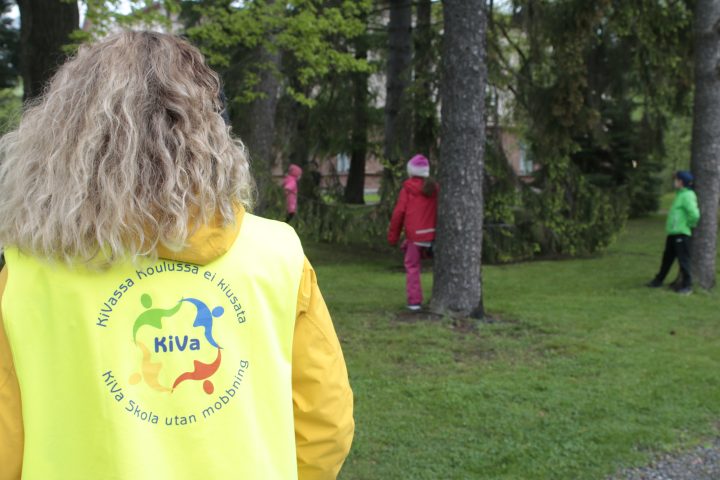School Bullying: The Role of the Peer Group Does Not Preclude Individual Responsibility

Claire F Garandeau
Assistant Professor of Psychology
Researchers in the field have long known that episodes of bullying generally do not involve two individuals only – a perpetrator and a victim – but the whole peer group. The recognition of the role of the peer group in cases of bullying is definitely not new. It became obvious already in the 1990s, when all major advances in the field had to do with the importance of the peer group and the social context in bullying.
First, a whole body of research has been devoted to relational or indirect forms of aggression (Björqvist et al., 1992; Crick & Grotpeter, 1995; Galen & Underwood, 1997). These studies draw attention to the fact that bullying was not limited to overt, direct behaviors, such as physical attacks or verbal insults, but could be carried out using more subtle and indirect means, such as spreading rumors, or excluding someone from the peer group. The identification of relational means of aggression brought to light the importance of the peer group. Indeed, it is not possible to spread lies about someone or to exclude someone without involving the group.
A second major landmark was the Participant Role approach (Salmivalli, 1996), which describes how situations of bullying involve bystanders, who can either join in the bullying, reinforce the bullying (by laughing, cheering, etc.), remain passive or stand up for victims. In this approach, bullying is viewed as a group phenomenon because the behaviors that bystanders choose to adopt may determine whether the bullying continues or not.
Finally, there was an emergence of studies showing that aggressive children and adolescents, including bullying perpetrators, enjoy high levels of popularity in the peer group. They may not always be liked but they are nonetheless perceived as being popular (Cillessen & Rose, 2005). This line of research also emphasized the responsibility of the peer group in situations of bullying, as awarding high status to the aggressors is a way to reinforce the behavior.
Recognizing the essential role of the peer group brought a lot of hope for anti-bullying interventions. Instead of focusing efforts on “fixing” problematic individuals, changing the attitudes and behaviors of bystanders was believed to lead to positive behavioral changes. Indeed, anti-bullying programs such as the KiVa program or the Olweus program, target all students in the school and have been shown to be effective, in several countries (Salmivalli et al., 2013). Therefore, there is no indication that this approach is misguided.
Nevertheless, the fact of the peer group plays a role in cases of bullying does in no way imply that no individual is responsible for initiating the bullying. A group can be manipulated by one or a few individuals; this is what happens with social exclusion or when a rumor is spread. In these cases, the peer group serves as a weapon to carry out the aggression (Garandeau & Cillessen, 2006). Moreover, several limitations regarding the evidence of the influence of the context have emerged in the bullying literature in recent years.
First, multilevel studies that distinguish the variance at the individual level and the variance at the classroom level consistently show that most differences are between individuals when it comes to bullying perpetration or aggression. In other words, there is much more variability or differences in bullying behavior between individuals within the same classroom (around 85-95%) than between classrooms. If the peer group or the classroom social context played a more important role than individual characteristics, these percentages would look radically different.
Second, there has been an increase in studies looking at the heritability estimate of bullying behavior, that is, the proportion of the variance in bullying behavior between individuals that is due to differences in their genetic make-up. The heritability estimate for bullying ranges across studies and samples from 40% to 80%, which is high (Johansson et al., 2020).
Third, when studies investigate the effects of group characteristics, such as for instance the classroom social climate, they generally measure the classroom characteristic by computing the average of individual scores in the classroom. These measures of classroom features can therefore be strongly influenced by the high scores of a few individuals in the classroom. As a result, we interpret as an effect of the social context something that may actually only reflect the influence of some individuals, such as bullying perpetrators.
I am not at all suggesting that the social context does not matter in bullying incidents, it certainly does, but maybe not to the large extent that we might have assumed. Consequently, relying solely on changing the social context in the hope that it will make bullying stop may prevent us from making the necessary improvements to the fight against bullying. It is important not to abandon a more individualized approach to tackling and understanding bullying. The literature on school bullying already abounds in studies on personal characteristics of bullying perpetrators, such as moral disengagement, lack of empathy, or dominance goals, to name a few. We need to deepen our knowledge of the specific cognitions that lead some youth to instigate bullying against their peers, often by involving the whole peer group, and further our understanding of how these personal characteristics might interact with characteristics of the peer group or the classroom to predict bullying behavior. Such knowledge is essential to develop more effective targeted interventions to tackle incidents of bullying when they happen, but also to design new, more successful prevention strategies.
References
